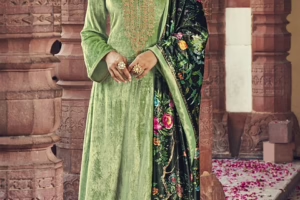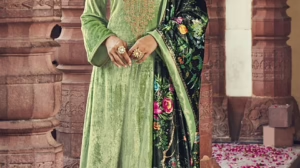Sustainable Style: The Rise of Eco-Friendly Fashion Trends
In recent years, the fashion industry has faced increasing scrutiny over its environmental and ethical implications. From the excessive waste generated by fast fashion to the exploitation of workers, the need for a more sustainable approach has never been more urgent. Enter the rise of eco-friendly fashion trends—a movement that seeks to redefine how we think about style, consumption, and our planet.
The Evolution of Sustainable Fashion
Sustainable fashion is not merely a passing trend; rather, it’s a conscious shift towards more responsible practices. This movement began gaining traction in the early 2000s, fueled by growing awareness of climate change, resource depletion, and unfair labor practices in the garment industry. Designers, brands, and consumers have slowly but surely begun to embrace sustainability as a core value.
Key Components of Eco-Friendly Fashion
-
Materials Matter: One of the most significant changes in sustainable fashion is the focus on materials. Organic cotton, recycled polyester, hemp, and Tencel are gaining popularity due to their lower environmental impact. Brands are increasingly opting for sustainable materials that reduce water usage, avoid harmful chemicals, and promote biodiversity.
-
Ethical Practices: Sustainability extends beyond materials; it delves into the ethics of production. Brands committed to ethical practices focus on fair wages, safe working conditions, and transparency in their supply chains. This approach not only benefits workers but also resonates with consumers who prioritize ethical considerations in their purchasing decisions.
-
Timeless Design: Fast fashion thrives on trends that quickly become passé, leading to garment disposal. In contrast, sustainable fashion emphasizes classic, timeless designs that promote longevity. This encourages consumers to invest in fewer, high-quality pieces, reducing overall consumption.
-
Secondhand and Upcycling: The vintage and thrift movement is gaining momentum as consumers increasingly favor pre-loved items over new purchases. Upcycling—transforming old garments into new creations—has also become a significant trend, allowing creativity to flourish while reducing waste.
- Technology and Innovation: New technologies, such as 3D printing and biofabrication, are ushering in exciting possibilities for sustainable fashion. Innovations allowing for on-demand production can minimize waste and reduce the carbon footprint of clothing manufacturing.
Icons of Sustainable Fashion
Several pioneering brands have emerged as leaders in sustainable fashion:
- Patagonia: Known for its environmental activism, this outdoor brand uses recycled materials and promotes repair and resale of its garments.
- Reformation: This trendy women’s apparel brand emphasizes transparency in its supply chain and celebrates eco-friendly practices, making sustainability chic and accessible.
- Everlane: With a focus on "radical transparency," Everlane reveals its production costs and partners with ethical factories worldwide.
These brands illustrate that sustainable fashion can be stylish, trendy, and responsible without sacrificing quality or aesthetics.
Consumer Influence and Awareness
As awareness of environmental issues grows, consumers are becoming more discerning and intentional in their purchasing decisions. Social media platforms have played an instrumental role in this shift, allowing consumers to share information about sustainable brands, ethical practices, and the environmental impact of fashion.
The rise of influencers who advocate for sustainable style has also contributed to this trend. They showcase how to incorporate eco-friendly pieces into everyday wardrobes, proving that sustainability and style can coexist.
Challenges Ahead
Despite the progress, challenges remain. The sheer volume of waste produced by the fashion industry is staggering, and not all eco-friendly claims are transparent or genuine. Terms like "greenwashing" refer to brands that market themselves as sustainable without making substantial changes to their practices.
A Sustainable Fashion Future
The rise of eco-friendly fashion trends indicates a promising shift in consumer culture. As more individuals prioritize sustainability in their wardrobes, the industry may also adapt, leading to a greener future. Education, advocacy, and genuine efforts from brands and consumers alike will be crucial in driving this transition.
In conclusion, sustainable style is more than just a trend—it’s a movement toward conscious consumption, ethical production, and environmental stewardship. By embracing eco-friendly fashion, consumers can play a pivotal role in shaping a better future for both the planet and the fashion industry. Each choice we make, from the brands we support to the pieces we wear, can either contribute to a wasteful cycle or pave the way for a sustainable legacy.
[Modern Footnote Source: For more information on sustainable fashion trends, please visit [source link].]


























Add Comment